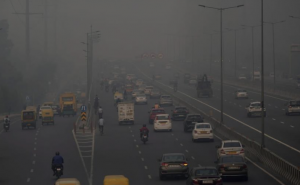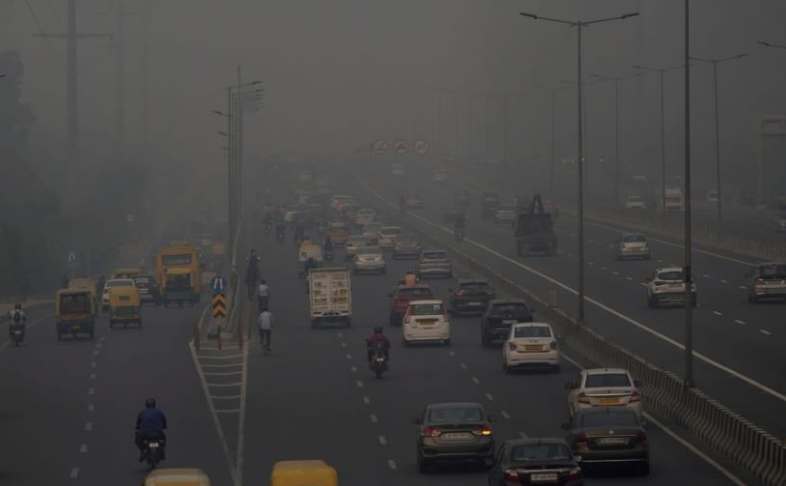NEW DELHI : On Wednesday, it was 364; on Tuesday, it was 359; on Monday, it was 347; on Sunday, it was 325; on Saturday, it was 304; and on Friday, it was 261. A number of the city’s neighbourhoods, including Anand Vihar (413), Mundka (420), Bawana (401), and Punjabi Bagh (416), had air quality reports in the severe category. Six to seven times the acceptable limit of 60 microgrammes per cubic metre of PM2.5, a tiny particulate matter that can enter the respiratory system through deep penetration and cause respiratory issues, was present in these locations. The city administration would not allow building in locations where the air quality index (AQI) is more than 400 for five days in a row, according to Delhi Environment Minister Gopal Rai’s announcement on Wednesday. In an effort to reduce vehicle pollution, the government has started “Red Light On Gaadi Off” and wants to hire 1,000 private CNG buses to improve public transport. In nearby Ghaziabad, the AQI was 230; in Faridabad, 324; in Gurugram, 295; in Noida, and 344 in Greater Noida. An AQI of zero to fifty is good, 51 to one hundred satisfactory, 101 to two hundred moderate, 201 to 300 poor, 301 to 400 very poor, and 401 to 500 severe. During the winter, the air quality in the Delhi-NCR reaches dangerous levels due to a combination of unfavourable weather, local sources of pollution, and smoke from firecrackers and burning paddy straw.The Delhi Pollution Control Committee (DPCC) conducted an investigation and found that between November 1 and November 15, when there are more stubble burning occurrences in Punjab and Haryana, the capital experiences peak pollution. The Punjab government wants to do away with stubble burning in six districts—Hoshiarpur, Malerkotla, Pathankot, Rupnagar, SAS Nagar (Mohali), and SBS Nagar—and cut down on farm fires by 50% this winter. About 31 lakh hectares of the state’s land are used for paddy production, according to the state’s action plan to reduce the burning of paddy straw. It is anticipated that this will produce about 16 million tonnes of non-basmati paddy straw. According to Haryana’s estimations, the state’s paddy crop covers approximately 14.82 lakh hectares of land. More than 7.3 million tonnes of paddy straw (not basmati) are anticipated as a result of this. This year, the state plans to almost completely eradicate farm fires. The two main causes of the city’s present poor air quality are stubble burning (7–16%) and vehicle emissions (11–16%), according to a numerical model-based method created by the Indian Institute of Tropical Meteorology (IITM) in Pune.
: On Thursday, a persistent hazy cloud covered the city for the third straight day, putting the air quality in several sections of Delhi in the’severe’ category. Scientists have forecast an increase in pollution in the Delhi-NCR region over the next two weeks due to an increase in farm fires and bad weather. Given that the air quality index has already above 400 in several places, this is worrying. According to medical experts, it may exacerbate respiratory issues and asthma in young people and the elderly. At 10 am, the city’s Air Quality Index (AQI) was 351.


